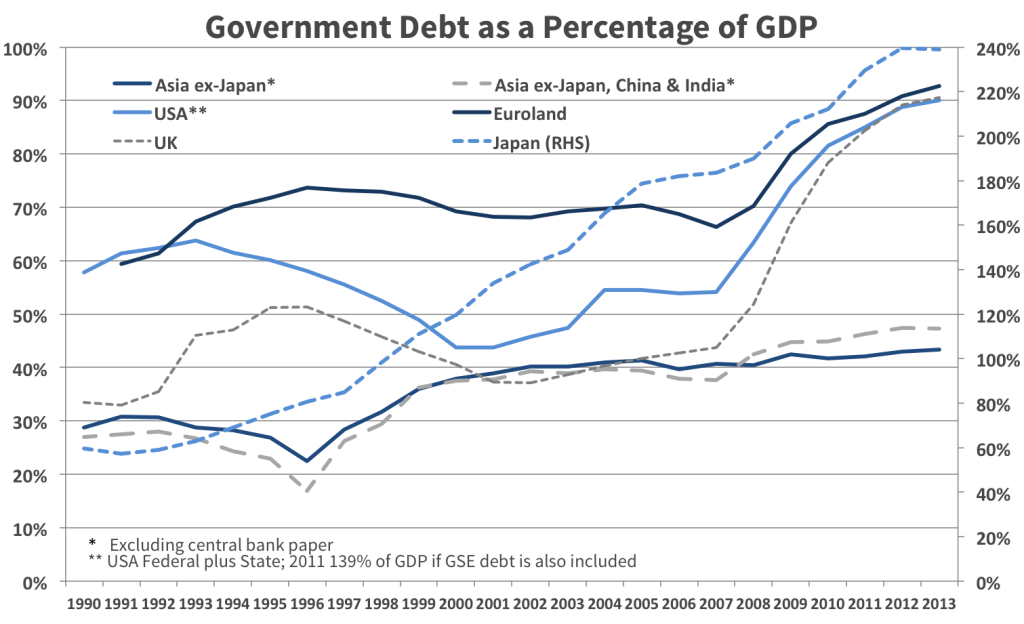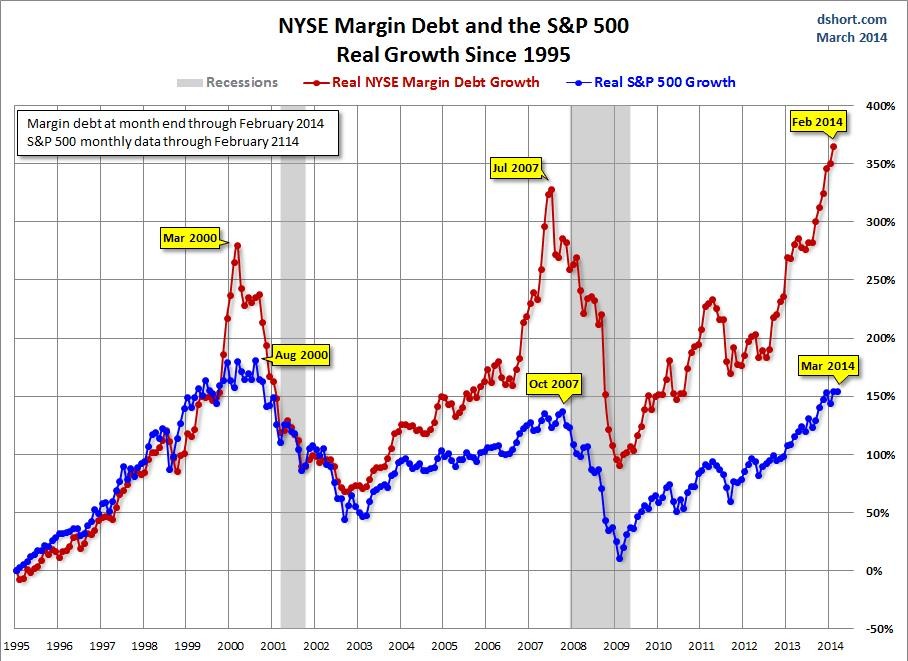Investing In Emerging Market Debt_1
Post on: 9 Июнь, 2015 No Comment

Equity isn’t the only game in town when it comes to emerging markets. The breadth and depth of the fixed income category has grown over time and emerging markets debt has become a viable asset class of its own. In this article, we look at the colorful history of emerging markets debt and discuss what potential investors should consider before buying in. (For background reading, see What Is An Emerging Market Economy? )
The Global Fixed Income Market
Fixed income encompasses a variety of debt obligation types: bonds. loans, bank certificates of deposit and commercial paper. among others.
The unifying feature of these products is a legal, contractual obligation for the issuing entity to pay the creditor a stated rate of interest plus the full principal invested over a defined time period. This contractual obligation is what makes fixed income a lower-risk asset class when compared with equities. Issuing entities include sovereign and municipal governments, government agencies, corporations and special purpose vehicles (SPVs) backed by assets such as mortgages, auto loans or credit card receivables (called asset backed-securities ). (To learn more about these securities, see Behind The Scenes Of Your Mortgage and Why Are Mortgage Rates Increasing? )
Most tradable fixed-income securities have a credit quality rating from a rating agency such as Moody’s or Standard & Poors. The rating helps investors assess an individual bond’s creditworthiness, or the likelihood that it will fulfill its contractual payment obligations without delinquency or default. (For more on this, see What Is A Corporate Credit Rating? )
According to the Bank for International Settlements. the size of the global bond market was $82.2 trillion in 2009, making it the world’s largest investment market. More than half of that figure is debt issued outside the U.S. By comparison, the size of the world equity market is estimated to be about $36 trillion. Bond market growth has come from a number of sources, including a proliferation of new product types and an increase in the number of countries able to tap the international sovereign and corporate debt markets. These countries, many of which now sport investment grade credit ratings, have a colorful past that tells the story of how emerging markets debt came to its present form. (For related reading, see The Bond Market: A Look Back .)
Crisis and Opportunity
Emerging market debt traces its origins back to the 1970s, a time when multinational banks in the U.S. and Europe were active lenders to the governments of developing countries, particularly in Latin America. Participants referred to this as the LDC (less-developed countries) debt market.
In the late ’70s and early ’80s, the world economy experienced difficulties arising from skyrocketing oil prices, double-digit inflation and high interest rates. These factors led a number of LDCs to fall behind on their external debt servicing obligations and culminated in the Mexican debt crisis of 1982, when the Mexican government declared a moratorium on servicing its interest payments. Other countries followed suit and the multinational banks found themselves sitting on a pile of nonperforming assets.
Out of this crisis, however, came a new opportunity; U.S. and European banks began swapping their nonperforming loans and by the late ’80s this practice had grown into a reasonably systematic market, the signature achievement of which was the Brady Plan in 1989 (named after then-U.S. Treasury Secretary Nicholas Brady).
The Brady-based bond market was an early instance of securitization. the creation of tradable securities backed by specific assets and cash flows. Banks were able to convert their outstanding LDC loans into Brady bonds, which were tradable instruments denominated in U.S. dollars and collateralized by U.S.Treasury Bonds. This allowed the banks to systematically write down the nonperforming loans on their balance sheets. Mexico issued the first Brady bond in 1990 and the market grew to $190 billion, representing 13 countries in its first six years.
Globalization and Contagion
Around the time that the Brady Plan was formed, the world economy was going through seismic changes. The Berlin Wall came down and the economies of Eastern Europe and the former Soviet Union joined the global party. China, India and the markets of Southeast Asia were rapidly evolving into high-growth, affluent economies. As these countries grew in size and creditworthiness, so did the global debt and equity markets. Portfolio capital flowed freely from the developed markets of North America, Europe and Japan into emerging markets, a successor term to LDC. Much of this investing was speculative. and included hedge funds and others seeking to benefit from the potential returns offered by these liberalizing markets.
However, liberalization got ahead of itself in many instances as market growth outpaced the implementation of a sound legal and economic infrastructure. Weak banking systems and current account deficits made these countries vulnerable to external shocks. This became clear in the summer of 1997 when Thailand’s currency, the Thai baht, depreciated by more than half; the Korean won followed shortly thereafter, with a 70% plunge. (For related reading, check out Current Account Deficits .)

Uncertainty caused by the currency shocks led to massive capital flight from the region, causing local bond and stock markets to plunge. Unfortunately, the crisis didn’t stop at the borders of Asian countries. Investors saw emerging markets as a single asset class and bailed out of their holdings in Eastern Europe and Latin America as well as Asia in a massive flight to quality. Things went from bad to worse when the Russian government defaulted on its outstanding debt obligations in August 1998. This created massive global financial dislocation including the well-publicized meltdown of the massive hedge fund Long Term Capital Management in the fall of 1998. (To learn more, read Massive Hedge Fund Failures .)
Road to Recovery
Despite the contagion of the ’90s and ongoing problems in the early 2000s in Argentina, Brazil and elsewhere, the emerging debt markets did not collapse. In fact, many enjoyed solid growth after 2002 with perennially strong stock markets, strengthening sovereign debt ratings and economic growth. Many of the countries that ran current account deficits in the ’90s (deficits accompanied by high inflation and weak domestic financial positions) moved into trade surpluses during this time and built up sizable foreign exchange reserves. Countries such as Brazil, which allowed its currency to float, have seen their local currencies appreciate dramatically against the U.S. dollar.
Investing in Emerging Markets Debt
One of the basic factors in deciding whether to invest in emerging markets debt is what risks you want to take. These markets offer a mix of sovereign, municipal. corporate and structured debt just as developed markets do. Offerings are divided into domestic and external, with the former being local currency issues and the latter denominated in U.S. dollars or another developed currency.
Emerging markets debt is a readily accessible asset class through mutual funds. Well-known fund managers such as PIMCO, Alliance Bernstein, Western Asset Management and DWS Scudder offer funds that access a variety of countries and product types. PIMCO, for example, offers three different emerging markets debt funds, each of which has a different focus: local currency (domestic) bonds, U.S. dollar-denominated bonds, and a mix of direct currency exposure with diversified bonds, loans and other instruments. Mutual funds allow retail investors to participate in an asset class that would otherwise be difficult to access or diversify within. Bonds do not trade like stocks, and the process of investing in individual securities can be expensive, time-consuming and complex. (For more insight, see Evaluating Bond Funds: Keeping It Simple .)
Conclusions
Emerging markets debt has come along way since the crises of the ’80s and ’90s. Improved legal, regulatory and economic climates within many countries in Asia, Latin America, Eastern Europe and elsewhere have brought a measure of stability to this market. Understanding how these markets evolved and becoming familiar with the offerings available in the capital markets today can help investors become more comfortable with this asset class and its potential role in a portfolio.














